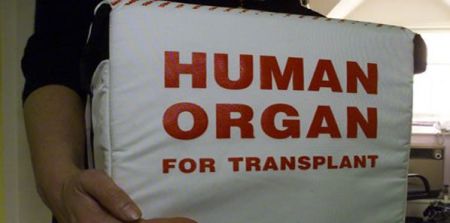According to a new research, broader sharing of deceased donor livers does not significantly increase cold ischemia time (CIT) and should not be considered as a barrier to broader organ sharing. The findings have been published in Liver Transplantation, a journal of the American Association for the Study of Liver Diseases and the International Liver Transplantation Society. This is good news in light of the fact that shortage for donor livers continues to be a source of concern in the United States.
According to Dr. Sommer Gentry of the United States Naval Academy in Annapolis, "Shortages and geographic inequity of organs available for transplant have required the liver transplant community to reassess the allocation policy in the U.S., and even broader sharing of organs may be needed."
Broader sharing of organs has generally been associated with a concern that it may increase transport times and affect CIT thus impairing the quality of the organ. However, in this study the research team surveyed all organ procurement organisations in order to verify the use of helicopters for the transportation of liver allografts to a central facility. They also investigated the distance at which the mode of transportation changed from driving to flying.
For the purpose of the study, 111 centres were identified. These included those that had performed at least one adult living transplant. In addition, they also included hospitals that recovered at least one of the 1284 deceased donor livers recovered in 2010. A total of 809 public, private, and military owned airports were used for organ transports.
The researchers then constructed a detailed model of driving, helicopter or airplane transport times. The results of the study showed that the median transport time estimated for regionally shared livers was two hours as compared to one hour for livers that were used within the local area. The model-predicted transport mode was flying for 90 percent of livers that were shared regionally and 22 percent for those that were allocated locally.
Median CIT was seven hours for livers shared regionally as compared to six hours for those used locally. Transport time comprised of 21 percent of CIT. Variation in transport time was approximately 15 percent of CIT variation. Based on these findings, Dr. Gentry concludes that non-transport factors impact CIT much more than transport time and thus the broader sharing of livers does not have much effect on CIT and does not have any negative impact on the liver transplant recipient. The only impact would be an increase in the number of organs that are transported by flying as compared to driving.
Source: Science Daily
Image Credit: Guardian.com
According to Dr. Sommer Gentry of the United States Naval Academy in Annapolis, "Shortages and geographic inequity of organs available for transplant have required the liver transplant community to reassess the allocation policy in the U.S., and even broader sharing of organs may be needed."
Broader sharing of organs has generally been associated with a concern that it may increase transport times and affect CIT thus impairing the quality of the organ. However, in this study the research team surveyed all organ procurement organisations in order to verify the use of helicopters for the transportation of liver allografts to a central facility. They also investigated the distance at which the mode of transportation changed from driving to flying.
For the purpose of the study, 111 centres were identified. These included those that had performed at least one adult living transplant. In addition, they also included hospitals that recovered at least one of the 1284 deceased donor livers recovered in 2010. A total of 809 public, private, and military owned airports were used for organ transports.
The researchers then constructed a detailed model of driving, helicopter or airplane transport times. The results of the study showed that the median transport time estimated for regionally shared livers was two hours as compared to one hour for livers that were used within the local area. The model-predicted transport mode was flying for 90 percent of livers that were shared regionally and 22 percent for those that were allocated locally.
Median CIT was seven hours for livers shared regionally as compared to six hours for those used locally. Transport time comprised of 21 percent of CIT. Variation in transport time was approximately 15 percent of CIT variation. Based on these findings, Dr. Gentry concludes that non-transport factors impact CIT much more than transport time and thus the broader sharing of livers does not have much effect on CIT and does not have any negative impact on the liver transplant recipient. The only impact would be an increase in the number of organs that are transported by flying as compared to driving.
Source: Science Daily
Image Credit: Guardian.com
Latest Articles
cold ischemia time, organ sharing, liver transplantation, donor livers, transport time
According to a new research, broader sharing of deceased donor livers does not significantly increase cold ischemia time (CIT) and should not be considered...
























